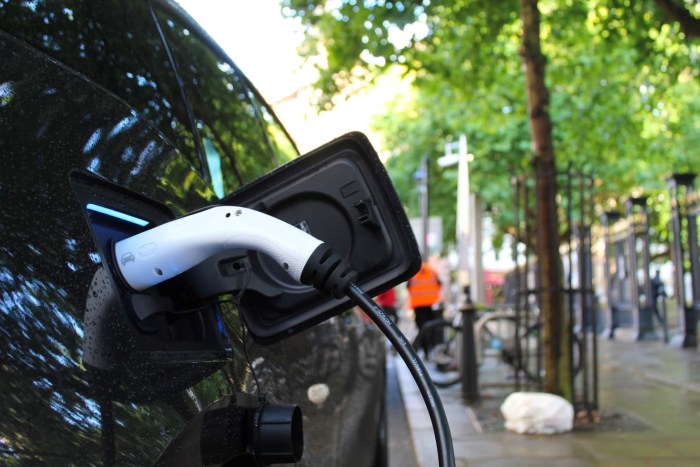By now, everyone living in the UK should be aware that by the end of 2030, non-electric passenger cars and light commercial vehicles will no longer be sold, imported, or manufactured in the country. Even though the plan seemed quite ambitious at the time of its announcement in 2020, recent stats tell us a different story altogether.
Excellent Sales Numbers Indicate Willingness to Welcome the Shift to EVs
According to data revealed by the UK Transport Department, the electric vehicle (EV) industry generated 173.5% more revenue during Q3, 2021, as compared to Q3, 2020. By the end of 2021, not only did the EV sector manage to sell the number of cars they needed in order to meet the necessary adoption curve, but they also exceeded their annual target by 60,000+ more electric vehicle sales.
Also Read: EV Uptake in Australia
These stats and figures more clearly indicate that people in the UK are both aware and willing to take the road needed for creating a more sustainable future for everyone. That being said, not everyone is ready or willing to support a shift to EVs yet. There are several social, economic, and political factors behind their unwillingness to adopt an electric car. Some of those causes are very real hurdles that the government hopes to overcome in the coming years.
Alongside other serious obstacles in the path of incomplete understanding of an EV’s benefits is a core problem that must be addressed. We are often informed that an electric vehicle is the more sustainable choice, but that statement is seldom explained properly. Whether you already own an electric vehicle or not, this post will help you understand why and how EVs are indeed the better choice for a cleaner, sustainable future.
Preparing for a Future without Fossil Fuels
More recently, the European Union (EU) has also declared its plans to slowly phase out fossil fuel vehicles by 2035. While we don’t yet have details regarding how they plan to go about it, it’s another step in the right direction. Despite the tremendous effort and investment it will take to create and maintain an automotive industry that’s not primarily reliant on fossil fuels, relevant governing authorities are still planning to go through with it. If successful, the entire movement will be tantamount to ushering in a new industrial revolution.
However, when multiple world governments decide in favour of reducing their dependence on non-renewable energy sources, the deeper implications are there for us to ascertain. People were running out of coal and petroleum from the very first day they started using it, but that time was still set in a very distant, vague future. As a result of globalisation, overpopulation, and over industrialisation, our energy consumption needs have increased beyond all previous estimations. Furthermore, that need continues to grow unchecked in several parts of the world. Consequently, we are now dangerously close to putting a date on a dystopian future!
It would take decades to build a reliable, new infrastructure that can effectively replace/reduce the need to rely on fossil fuels for an entire demographic. When the world finally runs out of easily accessible sources of fossil fuel, a well-developed alternative fuel industry must be present to keep us from reverting to the dark ages. Therefore, preparations to move away from non-renewable fuel sources must start now.
In conclusion, it can be said without a doubt that electric cars are the more sustainable and practical choice because that choice helps in building an infrastructure capable of surviving a future without easy access to petroleum. If we focus on the fact that running out of fossil fuels is an inevitability and not just a possibility, the current push towards adopting EVs begins to make a lot more sense.
That shift does not have to be difficult for anyone in the UK, although it may seem like a confusing change to many. Visit ElectriX to learn everything you need to learn about electric vehicles and find a good lease on your favourite model. They will even help you find cost-efficient insurance policies for your new EV. Leasing electric cars is the smarter choice right now because between now and 2030, EVs will improve exponentially with each passing year. A lease makes it much easier and more economic to shift to a newer, better, and more energy-efficient model, every time you need to.
Decreased Contribution to Air Pollution
In 2020, the Covid-19 lockdowns reduced vehicle usage across the world. Just a few weeks of decreasing traffic saw nitrogenous air pollutants plummet down to unforeseen percentages in the UK, Italy, China, India, and pretty much the entire world. It was confirmed by NASA in 2021 that the earth’s ozone layer also started to repair itself during those same periods. Given that the ozone layer protects us from extremely dangerous and highly carcinogenic cosmic and solar radiation, that was a startling discovery for the scientific community. Despite the core reason behind the environmental improvements being a very undesirable and unfortunate one, these events did manage to reveal some undeniable facts in plain sight.
It seems that just a few weeks of reduced traffic can lead to massive improvements in air quality, climatic conditions, and even ozone repletion. Therefore, we can only imagine how positive it would be for the environment if we shifted permanently to electric vehicles. Over time, even the infamous London smog can be eliminated if the majority of all vehicles running on its streets did not emit toxic fumes anymore. It should also be noted that regular exposure to urban smog is officially documented by the European Environment Agency (EEA) as a confirmed reason for killing over 400,000 people in Europe every year.
One may argue that electric cars have electric batteries, and they will contribute to the growing problem of dumping electronic junk in the future. It’s also true that electric cars are not completely emission-free either. In other words, EVs contribute to environmental pollution as well. This is, in fact, one of the chief arguments against adopting electric cars. However, that argument is not as valid as it may seem initially. The fact is that transportation across all formats is essential, and it cannot be stopped.
Therefore, the choice is about how we decide to power our vehicles and not whether we should be using vehicles. This leads us to an obvious comparison of available choices. Despite EVs also being responsible for harming the environment to some extent, that harm is almost negligible compared to the negative environmental effects of any vehicle running on fossil fuel.
Furthermore, we are close to reaching the peak of efficiency with combustion engines. This means that there’s not much that science can do at this point to make a traditional car engine more efficient than it is right now. On the other hand, we have only scratched the surface of what we can really do with electric car motors. In just a few years, electric vehicles will have more efficient, yet powerful electric engines, which will pollute even less than they do now. In other words, the electric vehicle is not just an eco-friendlier choice, but it is also our next step in automotive evolution.






















